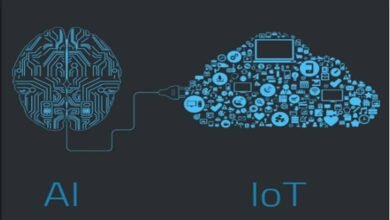How To Guide Starting Industrial IoT In 2024

How To Guide Starting Industrial IoT In 2024? In the ever-evolving landscape of technology, Industrial Internet of Things (IIoT) has emerged as a transformative force, reshaping industries and unlocking new possibilities. As we step into 2024, the integration of IIoT has become more crucial than ever for businesses seeking efficiency, agility, and competitive advantage.
Table of Contents
ToggleUnderstanding the Basics
Components of Industrial IoT
Industrial IoT relies on a network of sensors and actuators, collecting and transmitting data in real-time. The seamless operation of IIoT is further facilitated by cutting-edge connectivity solutions.
Key Technologies Driving IIoT Growth
The growth of IIoT is closely tied to advancements in technologies like Edge Computing, enabling data processing closer to the source, and the implementation of 5G for faster and more reliable connectivity.
Planning for IIoT Implementation
Assessing Current Infrastructure
Before diving into IIoT implementation, businesses need to conduct a comprehensive assessment of their existing infrastructure. Understanding strengths and weaknesses lays the foundation for a successful integration.
Setting Clear Objectives and Goals
Clarity in objectives is paramount. Whether it’s optimizing production processes, improving supply chain visibility, or enhancing product quality, setting precise goals guides the entire IIoT implementation journey.
Choosing the Right IIoT Platform
Comparison of Popular IIoT Platforms
Several IIoT platforms are available, each with its unique features. A comparative analysis helps businesses choose the platform that aligns with their specific requirements.
Considerations for Selection
Factors like scalability, compatibility, and ease of integration should be carefully considered. The chosen platform should seamlessly fit into the existing ecosystem.
Security Measures in IIoT
Importance of Cybersecurity
With the influx of data, cybersecurity is non-negotiable. Establishing robust security measures protects sensitive information and ensures the smooth operation of IIoT systems.
Best Practices for Ensuring IIoT Security
Implementing encryption, regularly updating security protocols, and conducting regular audits are among the best practices for maintaining a secure IIoT environment.
Data Management and Analytics
Handling Big Data in IIoT
The sheer volume of data generated by IIoT requires efficient handling. Businesses must invest in scalable data management solutions to derive meaningful insights.
Leveraging Analytics for Business Insights
Analytics transforms raw data into actionable insights. Businesses can make informed decisions, optimize processes, and uncover new opportunities through effective data analysis.
Integration with Existing Systems
Seamless Integration Strategies
To avoid disruptions during IIoT implementation, businesses should adopt strategies that ensure seamless integration with existing systems. Compatibility testing and phased rollouts are essential.
Avoiding Disruptions during Implementation
Ensuring minimal disruptions is crucial for a smooth transition. Proactive communication, employee training, and contingency plans contribute to a successful implementation.
Training and Skill Development
Importance of Workforce Training
The success of IIoT relies on a skilled workforce. Training programs should be designed to equip employees with the necessary skills to operate and troubleshoot IIoT systems.
Bridging the Skill Gap in IIoT
Identifying skill gaps and providing targeted training programs helps bridge the divide. Collaboration with educational institutions and continuous learning initiatives are key.
Cost Analysis and ROI
Calculating the Initial Investment
Businesses need to weigh the costs associated with IIoT implementation against the potential benefits. Initial investment considerations include hardware, software, and training.
Estimating Returns on IIoT Implementation
A thorough analysis of return on investment (ROI) helps businesses understand the financial gains over time. Tangible and intangible benefits contribute to a comprehensive ROI assessment.
Real-world Examples of Successful IIoT Implementation
Revolutionizes Manufacturing
Highlighting a real-world example where a company successfully implemented IIoT to revolutionize its manufacturing processes.
Optimizes Supply Chain with IIoT
Showcasing another instance of a business optimizing its supply chain through the strategic implementation of IIoT technologies.
Read More: From Sensor to Cloud: A Guide to IoT Data Transmission In 2024
Overcoming Challenges in IIoT Implementation
Common Roadblocks
Addressing common challenges such as interoperability issues, data privacy concerns, and resistance to change.
Strategies for Overcoming Challenges
Providing practical strategies and solutions to navigate and overcome challenges encountered during IIoT implementation.
Future Trends in IIoT
Evolving Technologies
Exploring the future landscape of IIoT, including emerging technologies that are poised to shape the industry.
Anticipated Industry Shifts
Discussing potential shifts in industries as a result of widespread IIoT adoption, and how businesses can prepare for these changes.
Conclusion
In conclusion, the year 2024 presents a prime opportunity for businesses to embark on the transformative journey of Industrial IoT. Embracing IIoT not only enhances operational efficiency but also positions organizations for long-term success in an increasingly digital world.
FAQs : Starting Industrial IoT
What is Industrial IoT, and how does it differ from traditional IoT?
Industrial IoT refers to the application of IoT technologies in industrial settings, focusing on enhancing operational processes and efficiency. Unlike traditional IoT, which may be more consumer-oriented, Industrial IoT specifically caters to industries, optimizing manufacturing, supply chains, and other industrial processes.
Why is cybersecurity crucial in Industrial IoT implementation?
Cybersecurity is paramount in Industrial IoT to protect sensitive data and prevent potential threats. With interconnected devices and systems, a breach could lead to severe consequences, including operational disruptions, data loss, and compromised safety.
How can businesses ensure a smooth integration of IIoT with their existing systems?
Businesses can ensure smooth integration by adopting strategies such as compatibility testing, phased rollouts, and proactive communication. This helps mitigate potential disruptions and allows for a gradual transition to IIoT without compromising existing operations.
What are the key considerations for selecting the right IIoT platform?
Selecting the right IIoT platform involves considering factors such as scalability, compatibility with existing systems, ease of integration, and the specific needs of the business. A thorough comparative analysis of available platforms is essential for making an informed decision.
What are the anticipated industry shifts with the widespread adoption of IIoT?
The widespread adoption of IIoT is expected to bring about significant industry shifts, including increased automation, improved efficiency, and the emergence of new business models. Organizations need to prepare for these changes to stay competitive in the evolving industrial landscape.











